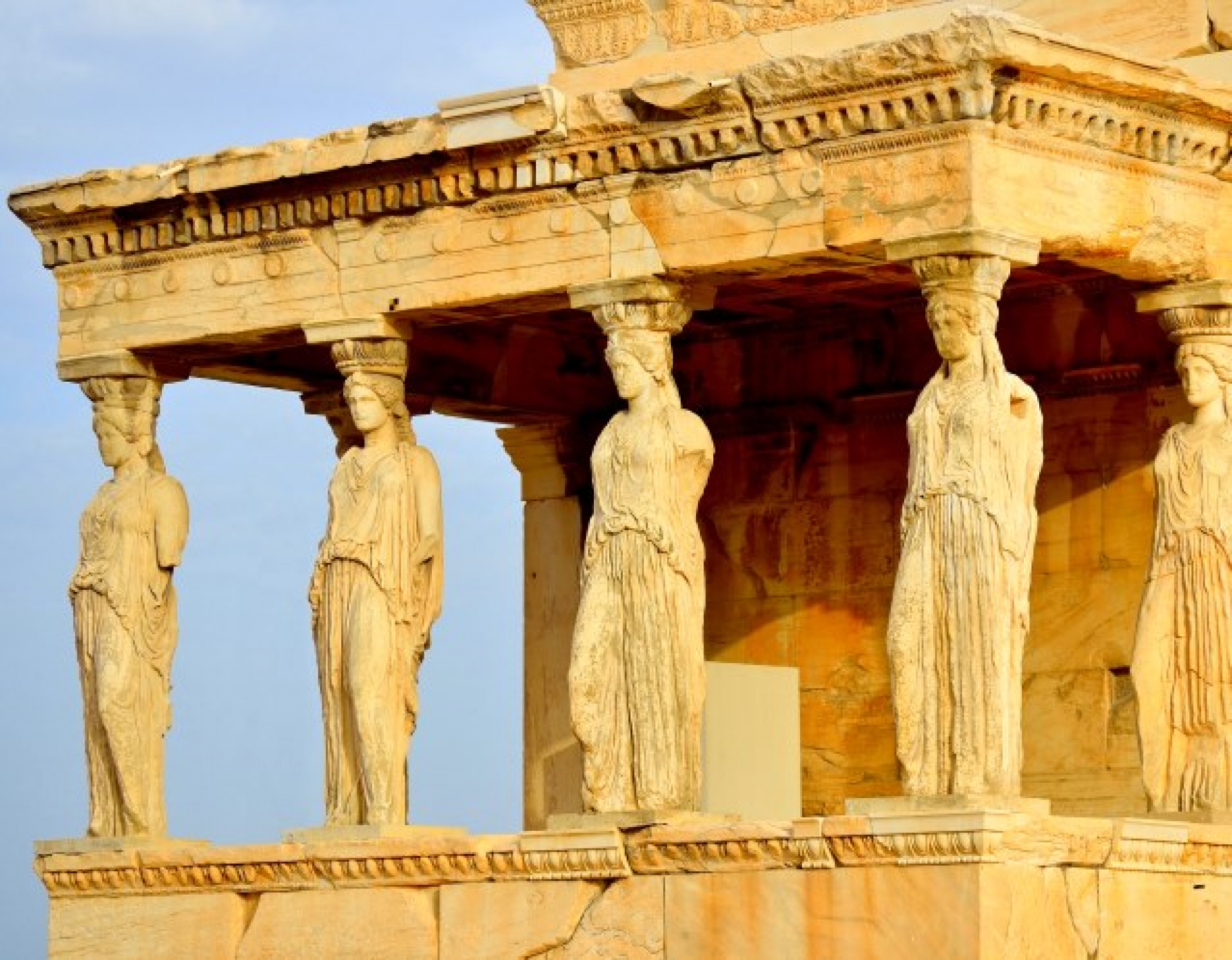The Erechtheum is an important temple at the top of the Acropolis, worldwide famous for its stunning Caryatids. According to mythology, this is the point where Athena and Poseidon quarreled over who will be the patron god of the city, with Athena being the final winner and thus giving her name to the city.
The temple was built between 421 and 406 BC, it is Ionic and quite peculiar, being built on two levels due to terrain's morphology. The temple took its name from the mythical king Erechtheus that is identified by some with Poseidon. It's construction material is the famous Pentelic marble and in the temple was a statue of the goddess Athena as well as a part of the sacred olive tree that the goddess gave to the Athenians. The temple was actually divided into two parts, one dedicated to Athena and another one to Poseidon, as Athenians did not want to dissatisfy any of the two gods.
Its worldwide fame stems, among others, from its external decoration and especially the Caryatids: Six female statues of exceptional beauty support on their heads the roof of the south portico of the Erechtheion. The Caryatids were probably symbolic guardian patrons of where according to legend was the tomb of Cecrops, the first king of Athens.
Today, the Caryatids are separated. Five of them can be found in a special hall in the new Museum of Acropolis, waiting for their sixth sister that is in the British Museum, along with other ancient marbles that Lord Elgin took from Greece during the Ottoman occupation.



